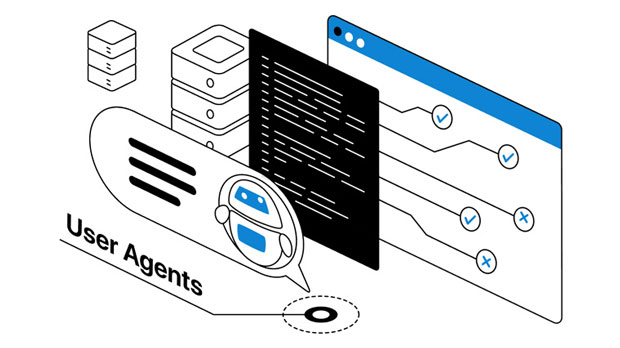In the world of internet privacy and data security, proxies serve as a critical tool for managing internet traffic and masking user identity. Among the various types of proxies available, socks5 proxies are widely used due to their flexibility, security, and ability to handle various types of traffic. However, the performance of these proxies can vary significantly depending on the configuration and type. Fast SOCKS5 proxies offer distinct advantages over regular SOCKS5 proxies, particularly in terms of speed, efficiency, and overall user experience. This article will explore the key performance benefits of fast SOCKS5 proxies compared to their regular counterparts, providing a detailed analysis to help users make informed decisions based on their needs. Understanding SOCKS5 ProxiesBefore delving into the differences between fast and regular SOCKS5 proxies, it’s essential to understand what SOCKS5 proxies are and how they function. SOCKS5 is the fifth and latest version of the SOCKS (Socket Secure) protocol. Unlike HTTP or HTTPS proxies that only work with specific types of traffic (like web traffic), SOCKS5 is versatile and can handle almost any type of traffic, including email, P2P, and even VoIP. It operates at the transport layer (Layer 5) of the OSI model, which allows it to tunnel data without interfering with the application layer.SOCKS5 proxies also support authentication, which means that only authorized users can connect through the proxy, offering an added layer of security. Additionally, they are capable of handling both IPv4 and IPv6 traffic, further enhancing their compatibility and usage across various networks.Key Performance Differences Between Fast and Regular SOCKS5 ProxiesWhile SOCKS5 proxies, in general, offer reliable and secure connections, fast SOCKS5 proxies are optimized for enhanced performance. These optimizations can make a significant difference in terms of latency, connection speed, and data transfer efficiency. The following are some of the key performance advantages that fast SOCKS5 proxies have over regular SOCKS5 proxies:1. Reduced Latency and Faster Response TimeLatency, or the delay in data transmission, is one of the most critical factors that determine the performance of a proxy. Fast SOCKS5 proxies are designed to minimize latency, ensuring quicker response times when making requests or establishing connections. This is particularly important for applications that require real-time communication, such as gaming, VoIP, or video streaming. Regular SOCKS5 proxies may experience higher latency due to factors like network congestion, server overload, or suboptimal routing. Fast proxies typically use better infrastructure, advanced routing protocols, and optimized servers to ensure that data reaches its destination with minimal delay.2. Higher Data Transfer SpeedsAnother notable advantage of fast SOCKS5 proxies is their ability to provide higher data transfer speeds. Regular SOCKS5 proxies may be affected by network congestion or server limitations, which can result in slower download and upload speeds. In contrast, fast SOCKS5 proxies use high-performance servers, faster internet connections, and fewer users per server, which translates into improved speed and efficiency. For users who rely on fast and uninterrupted connections for activities like downloading large files, streaming high-definition content, or conducting high-speed financial transactions, fast SOCKS5 proxies are a significant upgrade.3. Better Stability and ReliabilityStability is a critical aspect of any proxy connection. Fast SOCKS5 proxies tend to be more stable and reliable than regular SOCKS5 proxies, as they are typically backed by more robust infrastructure. This includes high-quality hardware, dedicated bandwidth, and more efficient routing methods. Regular SOCKS5 proxies may experience disruptions, especially during peak usage times or when the proxy provider’s infrastructure is under strain. Fast SOCKS5 proxies, on the other hand, are designed to handle a higher volume of traffic without compromising performance, making them more reliable for long-term use.4. Enhanced Security and Privacy FeaturesWhile both fast and regular SOCKS5 proxies offer encryption and privacy features, fast SOCKS5 proxies often come with enhanced security measures that make them more resilient against cyber threats. These proxies tend to employ more advanced encryption techniques, preventing third parties from intercepting sensitive data. Furthermore, fast SOCKS5 proxies may have more secure tunneling protocols, making them harder to bypass or compromise. Although regular SOCKS5 proxies provide a level of privacy, the additional security layers in fast proxies offer an extra layer of protection, especially for users engaging in high-risk online activities.5. Efficient Resource UtilizationFast SOCKS5 proxies are optimized for resource efficiency, which means they consume fewer system resources while maintaining high-performance levels. This efficiency is particularly important for users running multiple applications or tasks simultaneously, as the proxy will not slow down the overall system. Regular SOCKS5 proxies may consume more resources due to inefficient routing or server overload, which can lead to lag and system performance degradation. Fast SOCKS5 proxies, on the other hand, minimize this impact, allowing users to enjoy a seamless experience even when running demanding tasks in the background.6. Improved Scalability for High-Traffic Use CasesFor businesses or individuals who need to handle a large volume of traffic, fast SOCKS5 proxies offer better scalability compared to regular SOCKS5 proxies. Fast proxies are typically hosted on high-capacity servers that can scale according to the user’s needs, ensuring that the proxy can handle a larger number of simultaneous connections without sacrificing speed or reliability. This makes them ideal for use cases that require heavy bandwidth, such as conducting automated tasks, managing multiple accounts on social media platforms, or running large-scale data scraping operations. Regular SOCKS5 proxies may struggle to handle such high traffic, leading to slower speeds and potential connection failures.7. Reduced Packet Loss and Network ErrorsPacket loss and network errors can severely impact the quality of a proxy connection, particularly for users relying on real-time data or multimedia services. Fast SOCKS5 proxies are designed to minimize packet loss by maintaining a stable and high-quality connection between the user and the destination server. This is achieved through advanced error correction protocols and better routing paths. Regular SOCKS5 proxies may suffer from packet loss due to suboptimal network conditions or a congested server environment, leading to slower performance and disrupted connections.ConclusionIn conclusion, fast SOCKS5 proxies offer significant performance advantages over regular SOCKS5 proxies in terms of speed, latency, stability, security, and resource efficiency. For users who require optimal performance for tasks such as real-time communication, high-speed downloads, or handling large volumes of traffic, fast SOCKS5 proxies provide a superior solution. While regular SOCKS5 proxies are a reliable option for many use cases, fast SOCKS5 proxies are better equipped to meet the demands of high-performance applications. By choosing fast SOCKS5 proxies, users can enjoy a smoother, more efficient, and secure online experience.
Jan 03, 2025






















































